World Snake Day: Here are 10 slithery reptiles found in Corpus Christi
World Snake Day, held annually on July 16, aims to increase awareness regarding the thousands of snake species living across the world.
Sounds scary, but not all of them are venomous or bad. Some help get rid of nagging bugs and rodents.
The day aims to help change the negative perception surrounding snakes and promote the love for all living beings — even the ones you may fear.
Here are 10 slithery reptiles that are found in Corpus Christi, and some important facts about them.
Black rat snake
Commonly called the black snake, or pilot black snake, it is known as a skilled climber and swimmer.
You will normally encounter one in woodland areas, but can also be found in flatlands, farmlands and rocky hillsides.
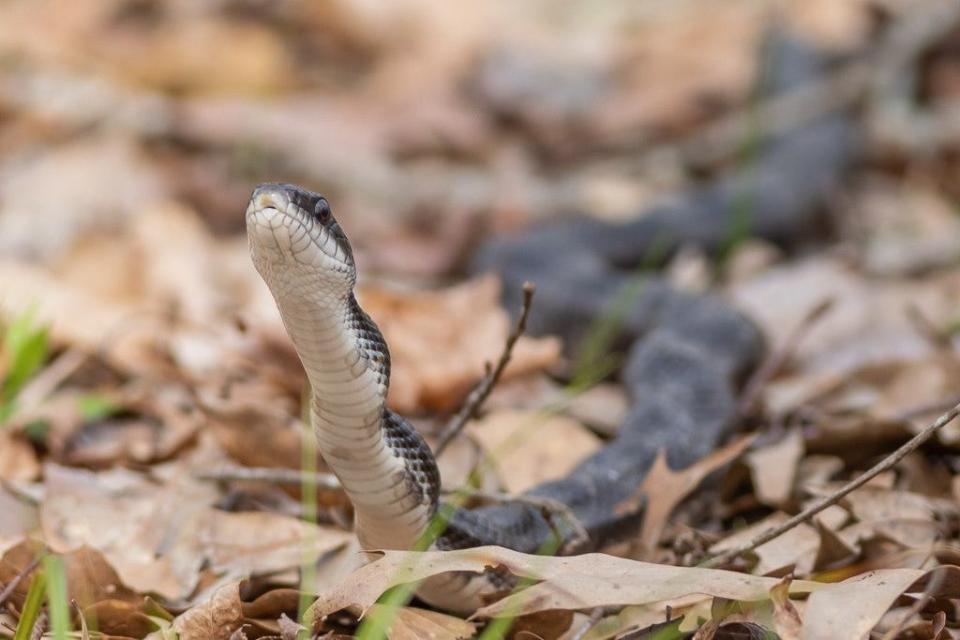
Is it venomous? No.
How long can it get? Up to 10 feet.
What does it eat? It eats large numbers of rodents and birds, lizards, soft-bodied insects and frogs.
Coachwhip
Coachwhip snakes can be found in open terrains, including prairies, desert regions and grasslands.
The snakes usually have a dark, almost black, head that fades into a slightly lighter-colored body. The underside of the reptile is a pink or red shade.
Is it venomous? No.
How long can it get? Up to 8 feet.
What does it eat? It eats lizards, other snakes, insects, birds and their eggs and various amphibians.
Copperhead
There are several subspecies of copperheads that are found in Corpus Christi, including the northern, southern, broad-banded and Trans-Pecos.
Copperheads easy to identify by their copper-colored heads. They are found in woodlands, under fallen logs and other places where there is a lot of low-growing vegetation and loose leaf/plant litter.
Is it venomous? Yes
How long can it get? Up to 3 feet.
What does it eat? It eats mice, small birds, lizards, small snakes, amphibians and insects.
Coral snake
These snakes are often mistaken for scarlet king snakes, as they share similar colors. However, coral snakes can deliver a potent and fatal venom.
Fortunately, coral snakes prefer to burrow and reside beneath leaf litter or underground.
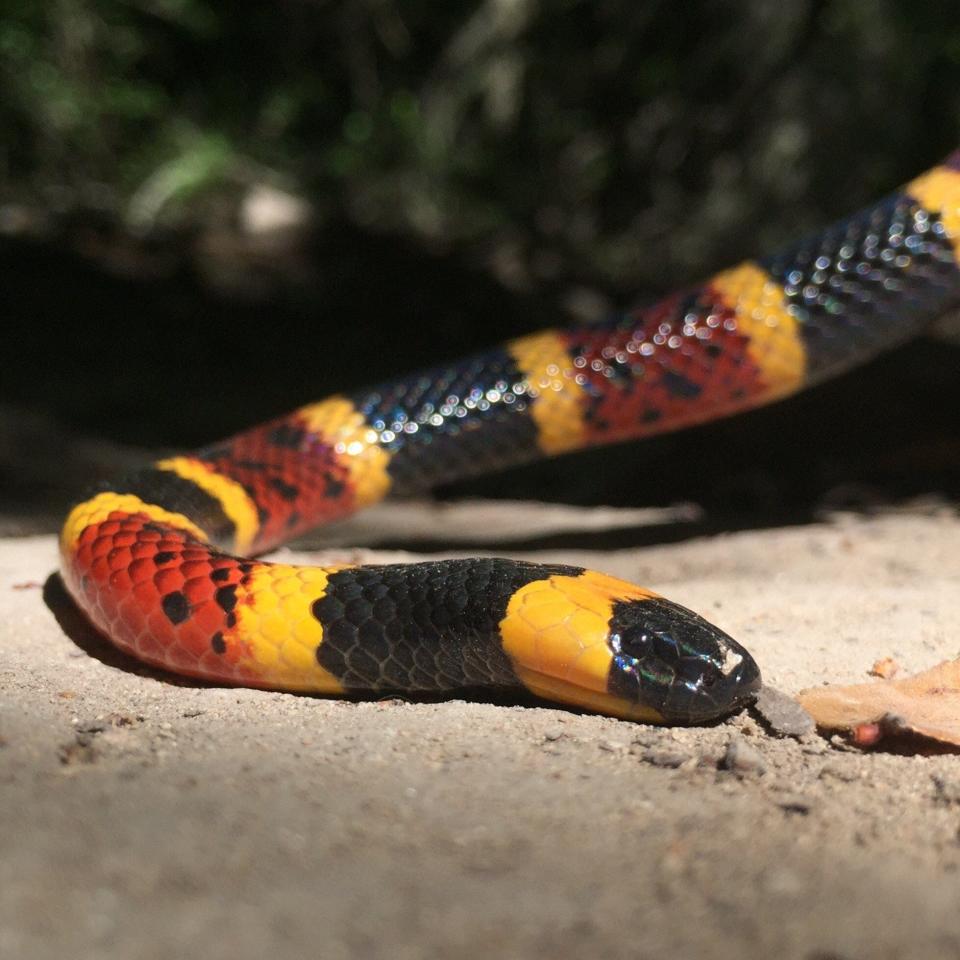
Is it venomous? Yes. Always remember the jingle, "Red and black, don't kill jack. Red and yellow, kill a fellow."
How long can it get? Up to 4 feet.
What does it eat? It eats smaller snakes, lizards, frogs, nestling birds and small rodents.
Cottonmouth
If you come to close to this snake, you'll be able to see how it got its name when it opens its mouth.
Commonly referred as a water moccasin, it can be found in moist environments including rivers, lakes, salt marshes and lowland swamps.
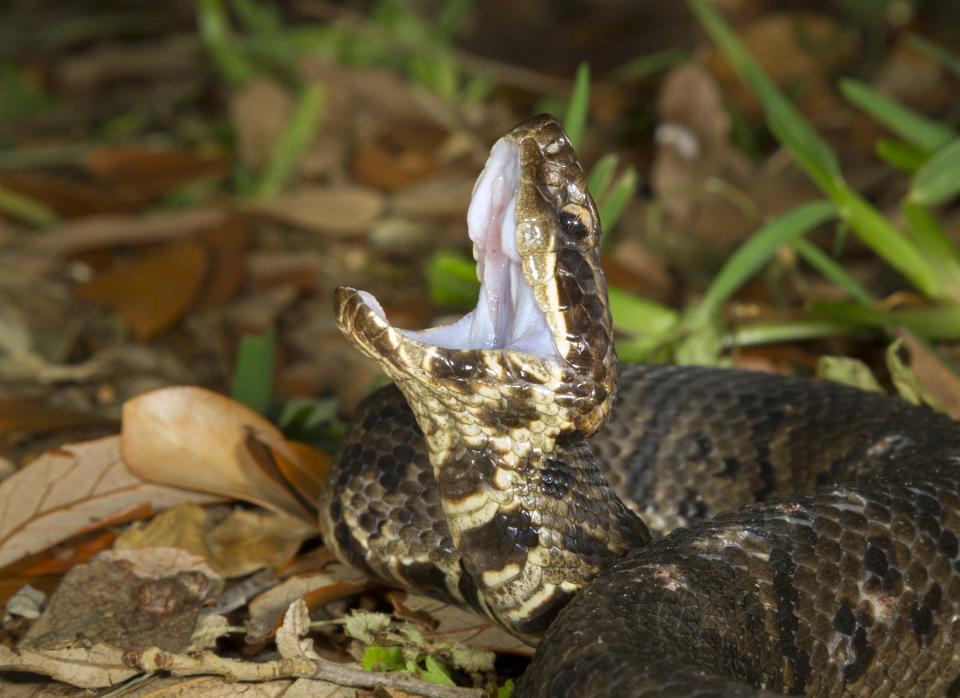
Is it venomous? Yes.
How long can it get? Up to 6 feet.
What does it eat? It eats frogs, fish, smaller snakes (including other cottonmouths), small water birds, small mammals, carrion and fish.
Gulf Coast ribbon snake
The reptile gets its name from the visible stripes that are brightly colored and run down the length of its body.
It can be found near bodies of fresh water, streams, ponds and lakes.
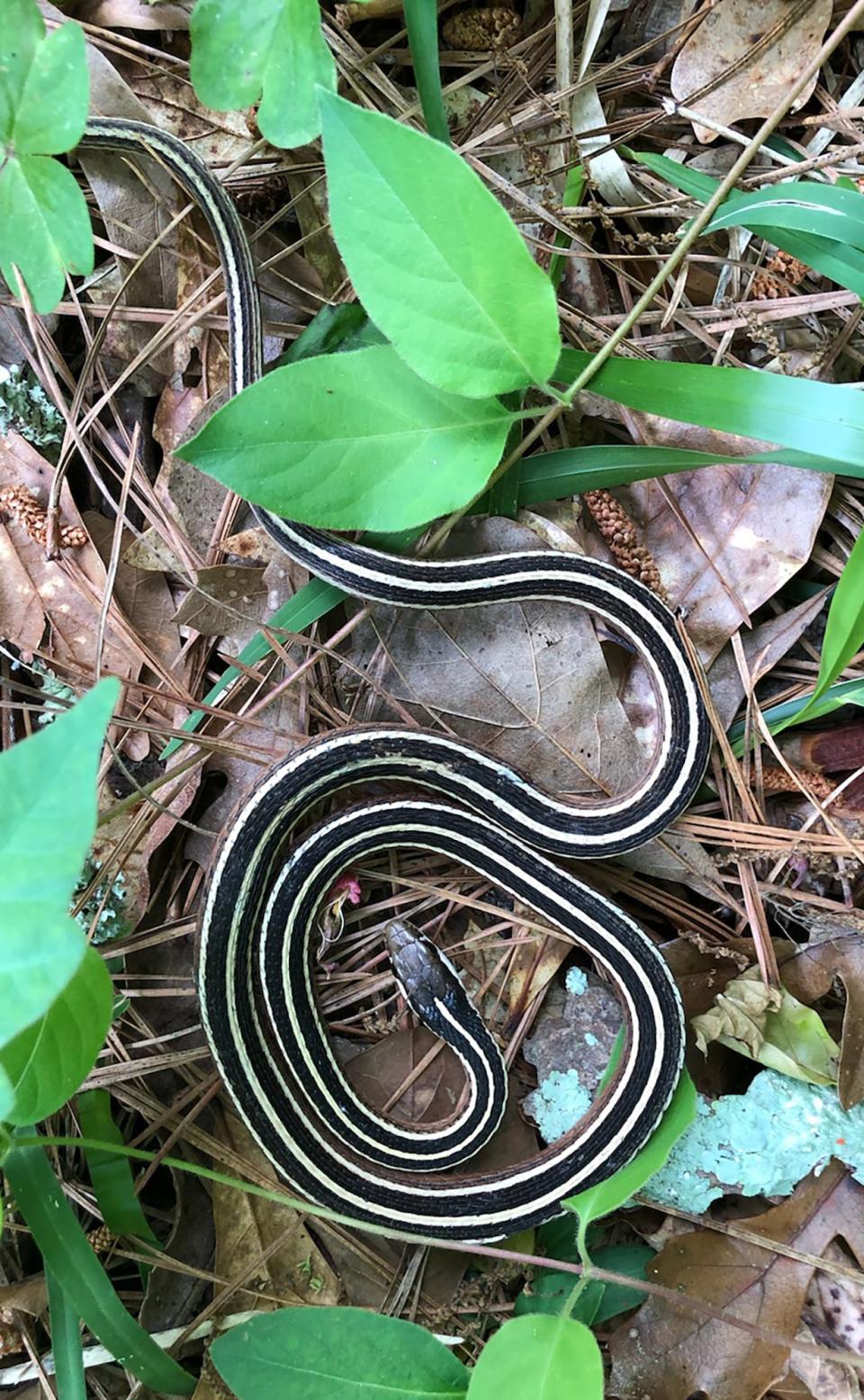
Is it venomous? Yes, but not to humans.
How long can it get? Up to 3 feet.
What does it eat? It eats tadpoles, frogs, toads, fish, earthworms and lizards.
Rattlesnake
Similar to the copperhead, there are several subspecies found in Corpus Christi including the black-tailed, timber and western pygmy.
Usually hiding underneath debris, in vegetation or under rocks or logs, be sure to walk in the opposite direction if you hear a rattling sound.
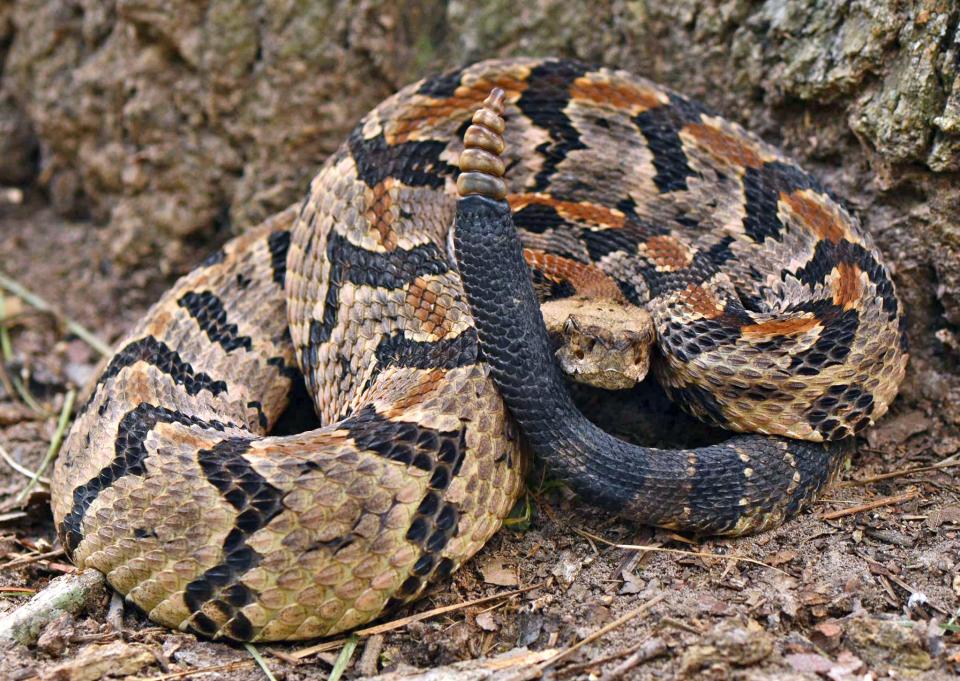
Is it venomous? Yes.
How long can it get? Up to 8 feet.
What does it eat? It eats rodents, rabbits, squirrels, birds, lizards and frogs.
Texas blind snake
Despite its name, the Texas blind snakes can see.
It is commonly confused with an earthworm, as it is a dark pink-brown color and very thin. They are normally found in arid grasslands and rocky hillsides.
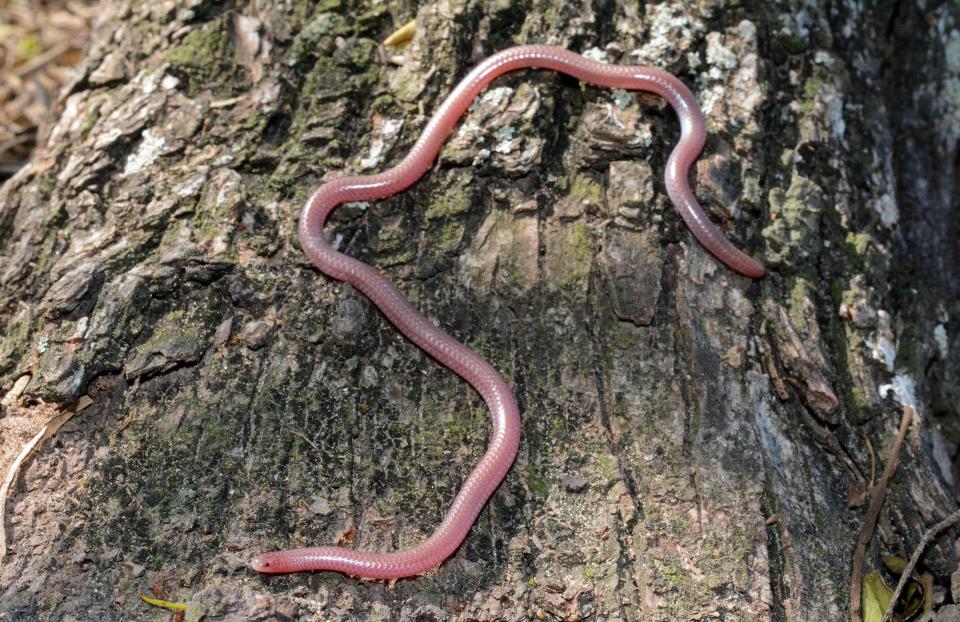
Is it venomous? No.
How long can it get? Up to 1 foot.
What does it eat? It eats larvae and pupae of insects, termites and earthworms.
Texas brown snake
If you are digging around in your flower beds, chances are you might come across the Texas brown snake. But this friendly reptile is doing gardeners a favor by eating pests wreaking havoc on your plants.
They can be shades of orange, red, gray and brown with large, dark eye-circles.
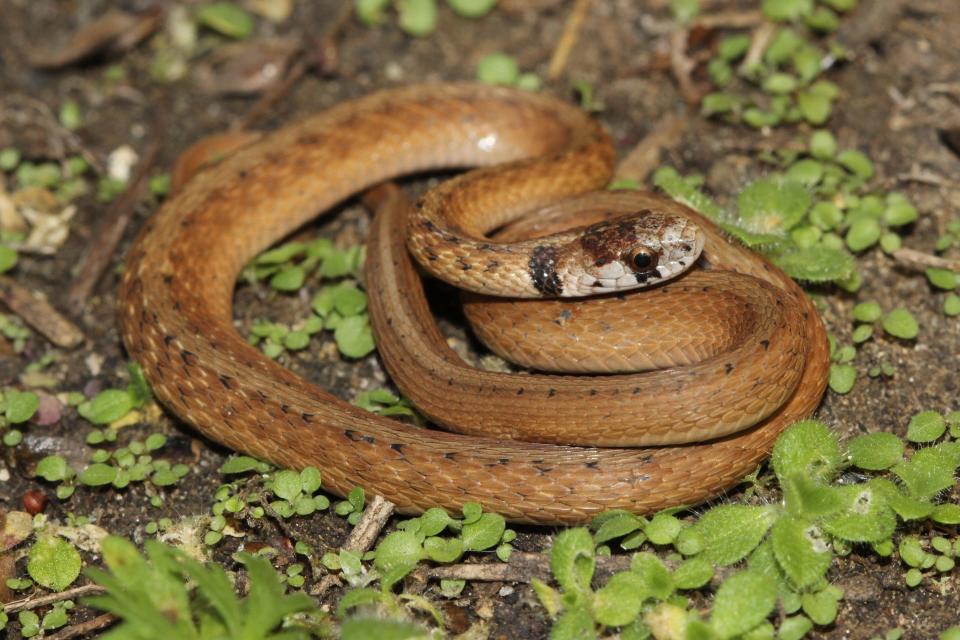
Is it venomous? No.
How long can it get? Up to 1 foot.
What does it eat? It eats earthworms, snails, slugs, small salamanders, soft-bodied grubs and beetles.
Texas indigo snake
As its name suggests, it is almost entirely an indigo-black shade. It shimmers in the sunlight with an iridescent finish.
It normally takes over burrows left by other animals, so be sure to fill them once you eliminate the initial pest problem. The Texas indigo snake is commonly found in grasslands near bodies of water.
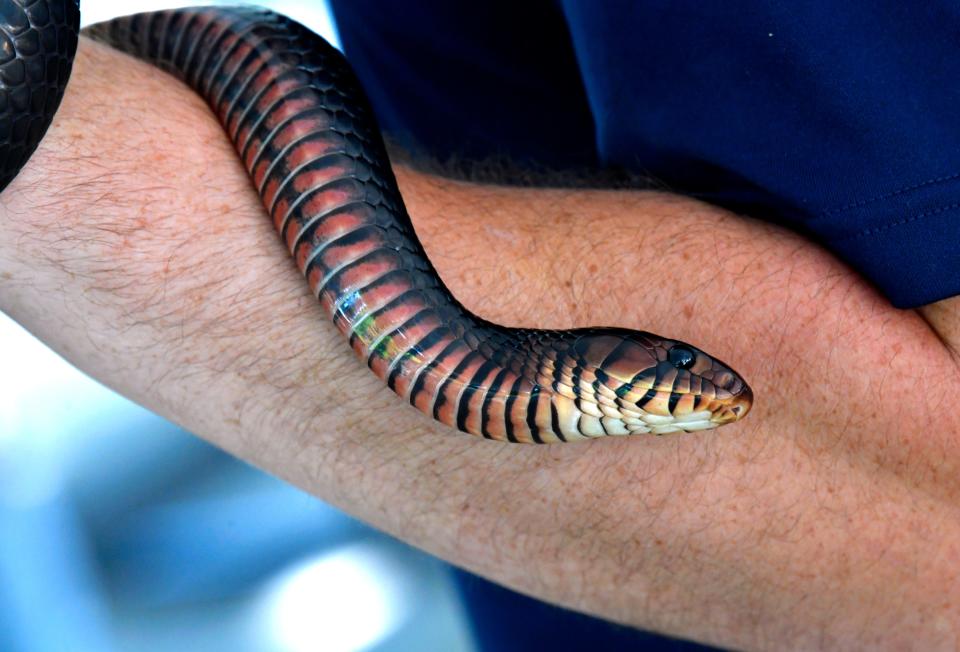
Is it venomous? No.
How long can it get? Up to 8 feet.
What does it eat? It eats mice, birds, lizards, frogs and other snakes — including rattlesnakes.
RELATED COVERAGE
More: Steer clear of these 13 venomous species in South Texas
More: Endangered, threatened species: Which ones can be found in Nueces County
John Oliva covers entertainment and community news in South Texas. Contact him at john.oliva@caller.com or Twitter @johnpoliva.
Consider supporting local journalism with a subscription to the Caller-Times.
This article originally appeared on Corpus Christi Caller Times: 10 snakes found in Corpus Christi

